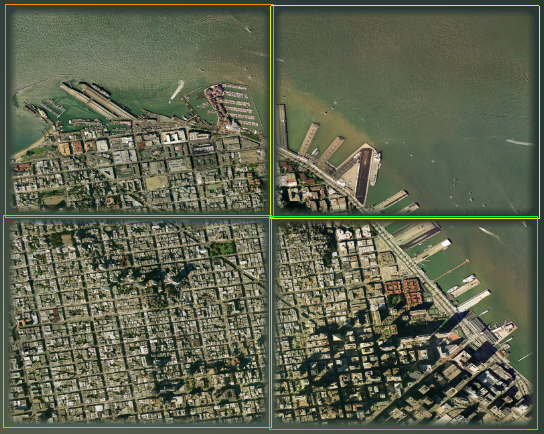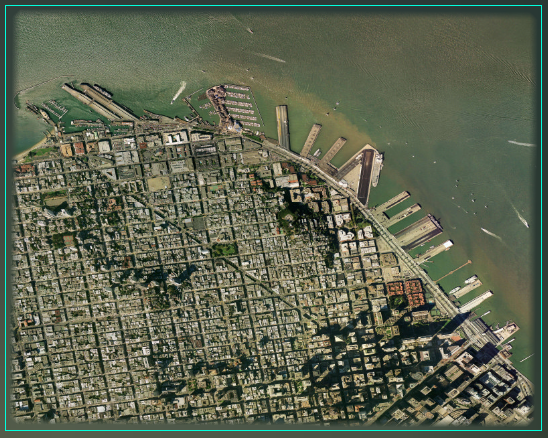Segmenting Large Imagery Files¶
Google Earth Enterprise Fusion does not allow you to import raw
imagery source files larger than 80 GB. (Raw size = number of
pixels width * number of pixels height * 3.) Therefore, if you
have an imagery source file that is larger than 80 GB, you can
split it into two or more source files using the gesplitkhvr
command.
The gesplitkhvr tool produces a grid of image files designated
as rows and columns. For example, if you specify two rows by two
columns, the image is split into four smaller files. If you create
a separate resource for each resulting source file, it would look
like this in the Preview pane:

However, you can reconnect the split images by adding them all to a single resource, which would look like this in the Preview pane:

To split a large source file into multiple smaller files:
At the command prompt, change to the folder that contains the tutorial imagery source files by entering:
cd /opt/google/share/tutorials/fusion/ImageryConvert a
.tiffile to a.khvrfile by entering:gevirtualraster -o path/virtual_raster.khvr usgsSFHiRes.tifwhere path is the path to the folder where you want to save the resulting
.khvrfile. (See Creating Imagery Mosaics for more information about thegevirtualrastertool.)Note
The path where you save the resulting
.khvrfile must be on a known volume. (See “geconfigureassetroot --editvolumes” in the Command reference.)Change to the folder where you stored the virtual_raster.khvr (the value of path in step 2) by entering:
cd pathSplit the
.khvrfile into a 4x4 grid (16 image files) with a 10-pixel overlap among all of the files by entering:gesplitkhvr --rows 4 --cols 4 --overlap 10 virtual_raster.khvrThe names of the resulting files appear on the screen as they are created. The file names are constructed from the name of the original file (
virtual_raster), a row and column designation for each file (starting with-R1C3), and the.khvrextension.
Now you can import the 16 resulting image files into a resource.
